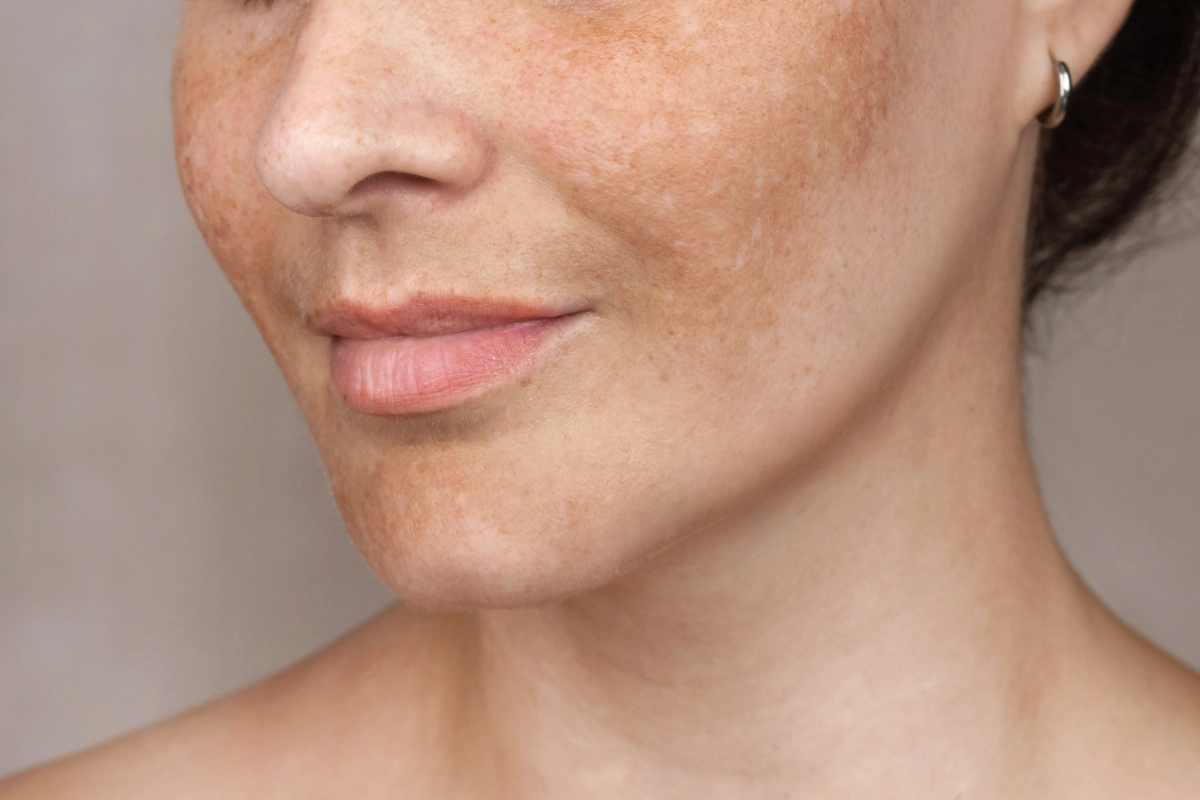
Melasma is a common skin condition that causes patches of discoloration, usually on the face. These brown or gray-brown spots often appear on the cheeks, forehead, nose, upper lip, and chin. While melasma isn’t harmful or contagious, it can be frustrating and emotionally distressing—especially when it seems to appear out of nowhere and resists typical skincare solutions.
Why Does Melasma Happen?
Melasma occurs when your skin’s pigment-producing cells (melanocytes) become overactive, leading to uneven patches of hyperpigmentation. This process is triggered by several factors, often in combination:
- Sun exposure: UV radiation is the leading cause and can worsen existing melasma
- Hormonal changes: Pregnancy, birth control pills, and hormone therapy are major triggers
- Genetics: A family history of melasma increases your risk
- Skin type: More common in medium to darker skin tones
What Increases the Risk of Developing Melasma?
You may be more likely to develop melasma if:
- You are pregnant (often referred to as the “mask of pregnancy”)
- You take hormonal contraceptives or hormone replacement therapy
- You have a family history of melasma
- You spend a lot of time in the sun without protection
- You use certain skin care products that irritate the skin
Understanding the Signs of Melasma
Melasma is characterized by flat, darkened patches of skin that are:
- Symmetrical (appearing on both sides of the face)
- Brown, gray-brown, or darker than your natural skin tone
- Typically located on the cheeks, forehead, upper lip, nose, or jawline
- Sometimes present on other sun-exposed areas like the neck and forearms
Melasma doesn’t cause itching, pain, or other physical symptoms—but it can impact self-confidence and emotional well-being.
Melasma: A Complex Condition, Not Just “Dark Spots”
Because melasma is influenced by hormones, sun, and genetics, it can be tough to treat without a customized approach. Over-the-counter products may help somewhat, but long-term improvement usually requires professional care and a commitment to sun protection.
What Can Make Melasma Worse?
Even with treatment, melasma can return or worsen if triggers aren’t managed. Common aggravating factors include:
- Unprotected sun exposure—even on cloudy days
- Heat from hot showers, cooking, or saunas
- Hormonal changes (pregnancy, menstrual cycles, or medications)
- Harsh exfoliants or irritating skincare ingredients
The Good News: Melasma Can Be Managed
While melasma can be persistent, it’s absolutely treatable with the right plan. Treatments often include:
- Topical lightening agents like hydroquinone, azelaic acid, or tranexamic acid
- Chemical peels or microdermabrasion (under professional supervision)
- Prescription retinoids to promote skin renewal
- Laser and light-based therapies (for selected cases)
- Strict daily sun protection with broad-spectrum SPF 30 or higher
- Hormonal assessment, if needed
We understand how frustrating melasma can be—but you’re not stuck with it. With expert care, patience, and consistent protection, your skin can become clearer and more even over time. Reach out to our team today to explore personalized treatment options and regain your glow—on your terms.
